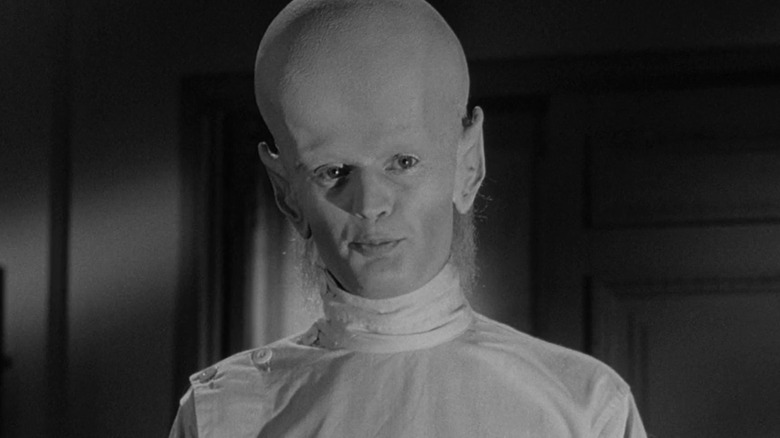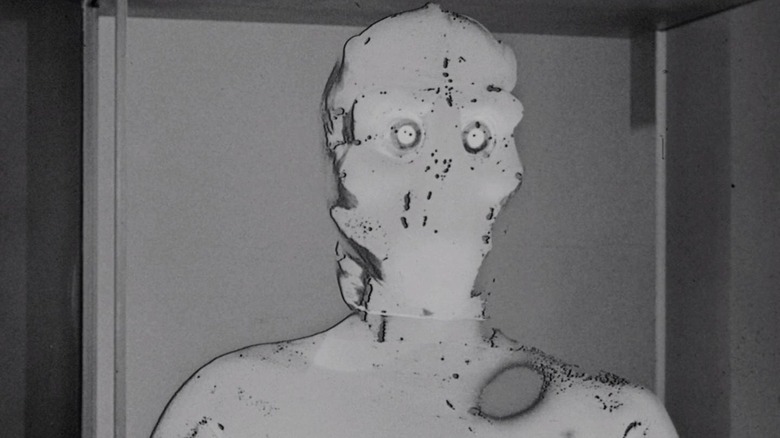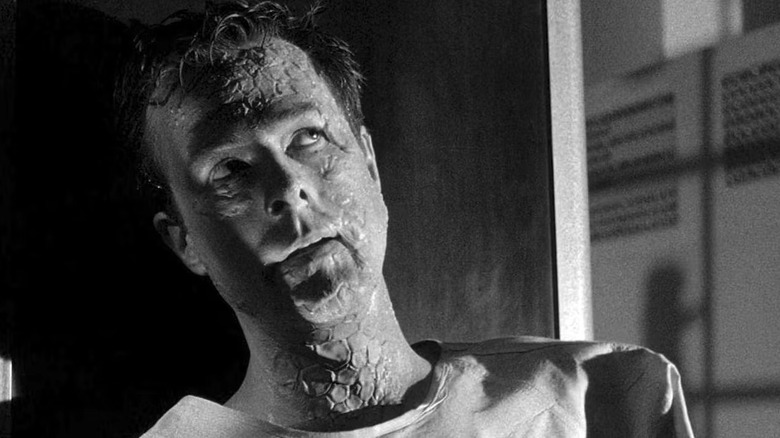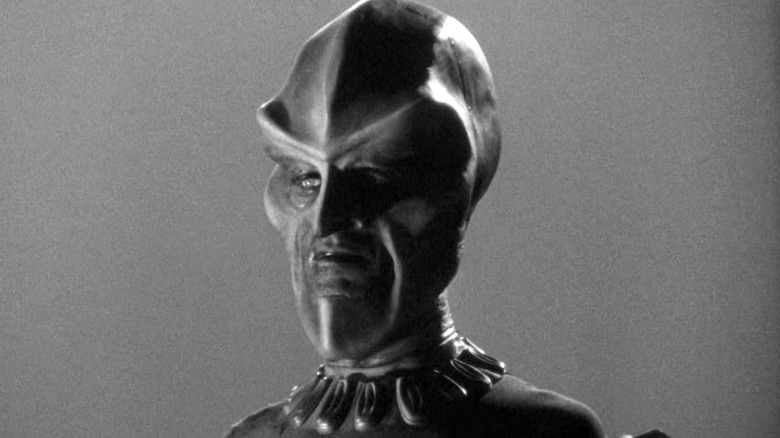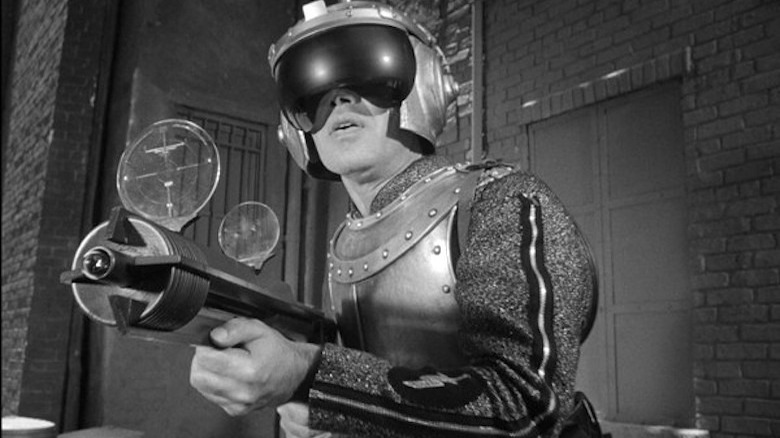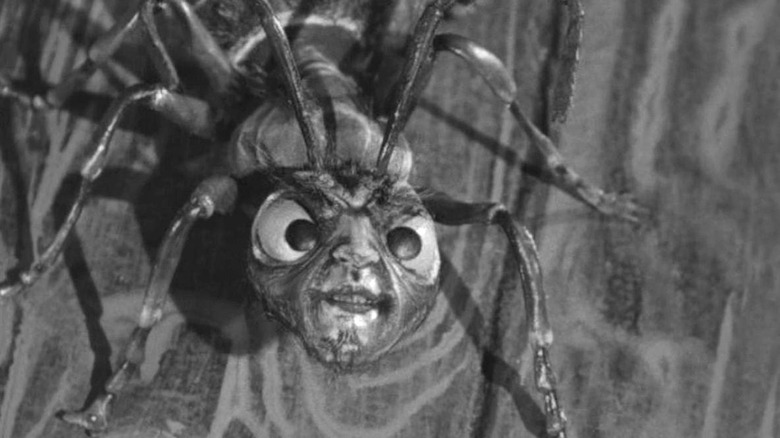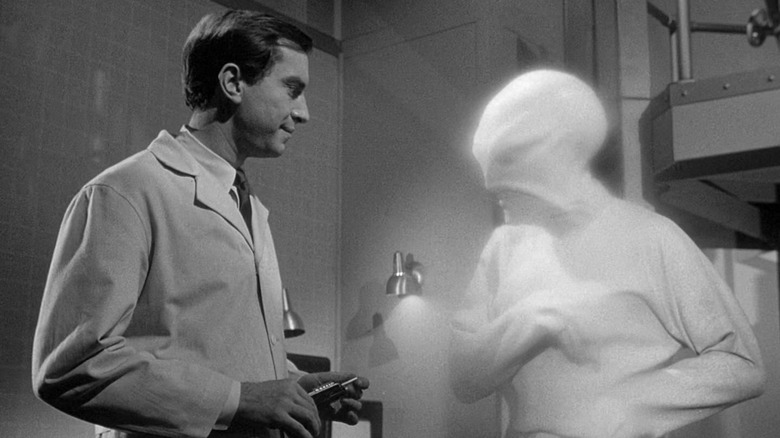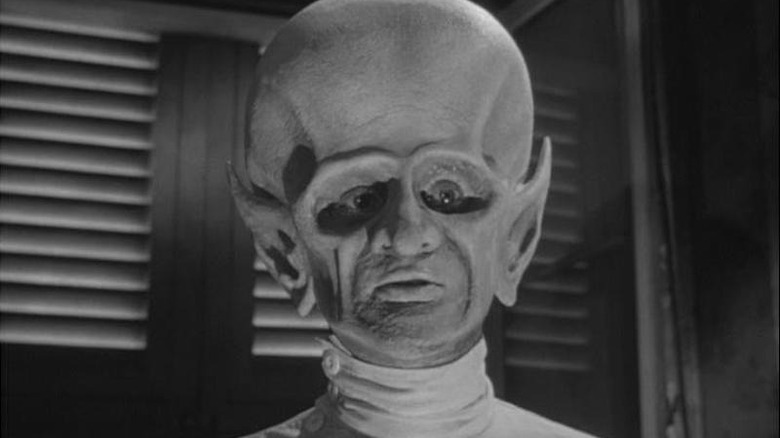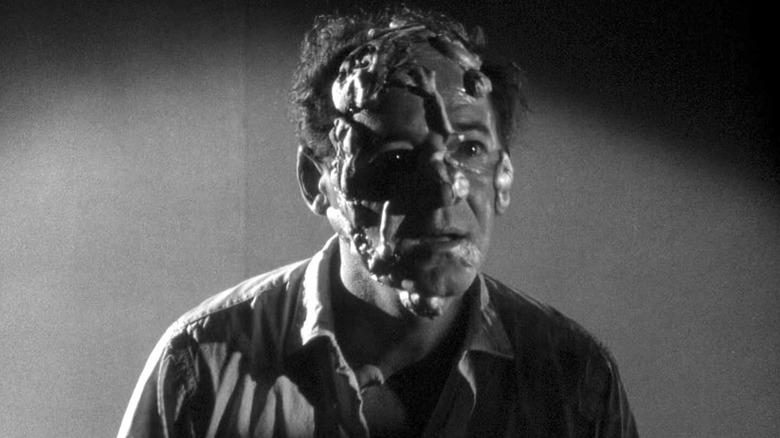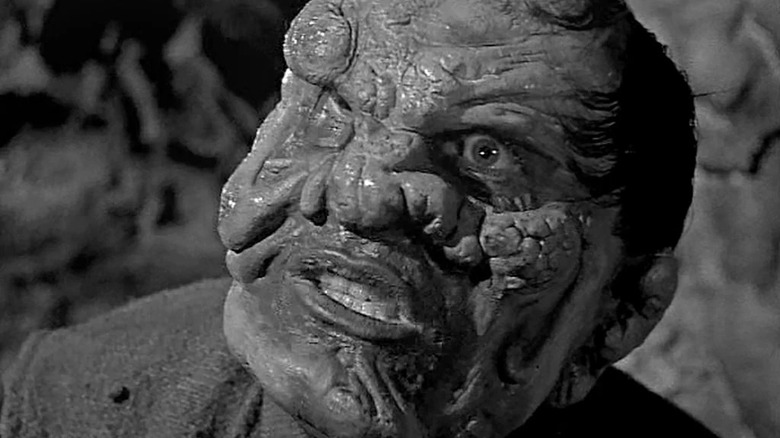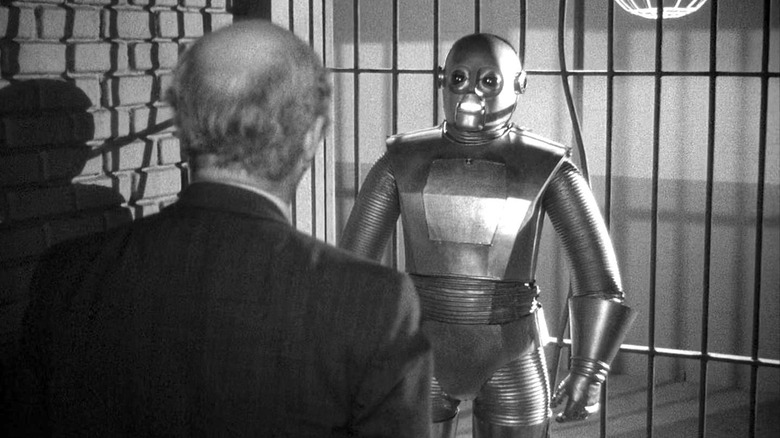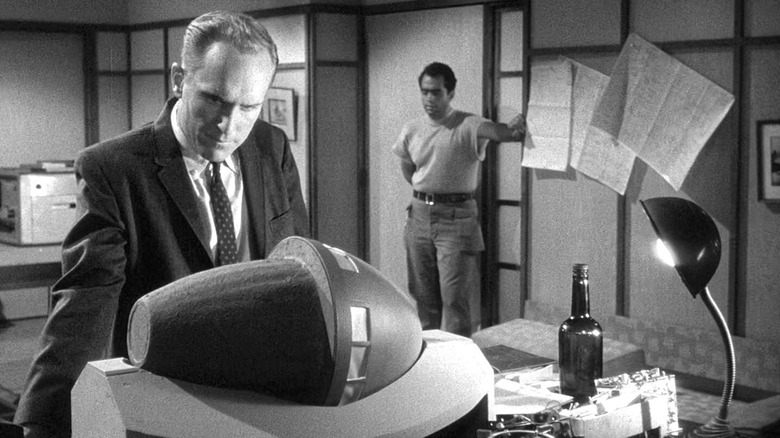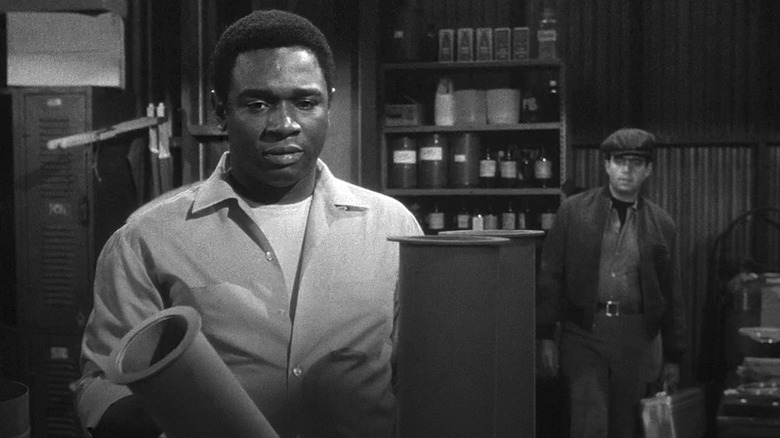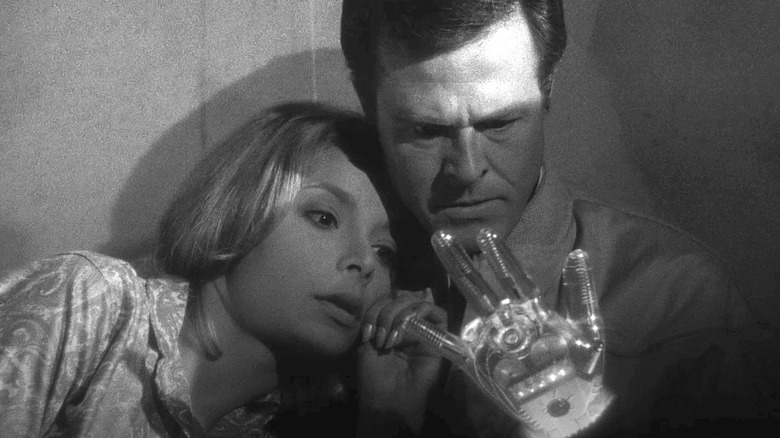The Best Episodes Of The Outer Limits Ranked
Few sci-fi shows reach the heights achieved by "The Outer Limits." Though this landmark anthology series ran for only two seasons, its legacy is far-reaching. It even earned a mid-'90s reboot, which ran for seven seasons, and has been the subject of further reboot rumors for years. Though it's often analyzed alongside "The Twilight Zone," comparisons to Rod Serling's classic have always done "The Outer Limits" a disservice. It has its own unique identity.
Favoring "monster of the week" stories, "The Outer Limits" fully embraces serious science fiction drama, with little humor or light-heartedness offered as leavening. Its one-hour runtime allows for more cerebral stories and a significant degree of suspense built on mood and atmosphere, rather than big twists or revelatory conclusions. Moreover, "The Outer Limits" features some of the most groundbreaking creature effects of its time. Many of its monsters have become sci-fi icons in their own right.
But what installments stand above the rest? We're here to answer that question. Sit back, relax, and don't attempt to adjust your device, because we are controlling the transmission. These are the very best episodes of "The Outer Limits," ranked.
13. The Galaxy Being
Episode 1, "The Galaxy Being," was first seen by audiences who were, perhaps, unprepared for the series' eerie atmosphere. This installment is the perfect opening salvo, as it sets the tone for all that follows. Its slower-paced story establishes the show's "monster of the week" formula, which sets it apart from its contemporaries. It also eschews any stunning twists, instead telling a thought-provoking story about an alien who becomes curious about planet Earth.
Starring Cliff Robertson, whom modern audiences will recognize as Uncle Ben from Sam Raimi's "Spider-Man" movies, "The Galaxy Being" begins with a radio engineer who becomes obsessed with a strange signal he detects coming from a distant star. Tuning his equipment to just the right frequency, he makes contact with a strange being who exists beyond the third dimension. As the two have lengthy conversations, the engineer learns that beyond our solar system lies a distant inhabited world whose people have been forbidden from contacting Earth because of humanity's violent tendencies. But when he mistakenly increases his transmitter's power, the fourth dimensional alien is transported to Earth. Will he be welcomed?
While there had been other sci-fi stories with similar social messages about our worst nature when this episode debuted, "The Galaxy Being" warns viewers of mankind's hubris in remarkably unsubtle terms. This direct approach is memorable, even if it's not the best the series has to offer.
12. The Architects of Fear
"The Architects of Fear" centers around a government project to unite mankind by providing the people with a deadly enemy that threatens the entire planet. "The Architects of Fear" is more than just this simple concept, however, and does not put it towards any kind of twist. Instead, the story focuses on a scientist who sacrifices his humanity to help save the world.
As the story begins, the globe is gripped with Cold War hysteria. Governments are certain that Armageddon is sure to be unleashed by a coming conflict. To avert annihilation, a group of scientists devise a plan to stage a fake alien invasion that they hope will force the disparate nations to put aside their differences and face a common enemy. To that end, Dr. Allen Leighton (Robert Culp) is subjected to horrific procedures that mutate his body into an alien-like monstrosity. The episode proceeds to explore the toll this transformation takes on him personally.
A powerful story with both personal and global stakes, "The Architects of Fear" is a unique entry in the series, and a poignant story of one man's sacrifice in the face of a planetary apocalypse.
11. Nightmare
While each episode of "The Outer Limits" typically features a terrifying creature — be it alien, beast, or mutated man — not every episode is a horror story. Case in point is the psychological thriller "Nightmare," a seminal episode with one of the show's most iconic monsters. A tall, slender, winged humanoid with a beak-like nose, protruding chin, and bulbous brain, this creature is enough to send shivers down any spine.
In this episode, Earth is engaged in a war with an alien race known as the Ebon, who have struck first with a nuclear assault. A small team of soldiers from across the globe is assembled to travel to the Ebon homeworld on a mission of war. But they're swiftly intercepted and taken prisoner by the aliens, who interrogate them using twisted psychological games and painful torture. The Ebon commander tells them that one of their group has given up their secrets and betrayed mankind. The episode becomes a game of wits — not between the men and their alien jailer, but between the soldiers themselves. These captives — each from a different Earth nation — must try to convince each other of their innocence and discover who among them is the traitor.
An episode with a moral lesson and a clever reversal at its conclusion, "Nightmare" is solid fare. No wonder it was remade in the 1990s "Outer Limits" revival.
10. Soldier
"Soldier" earns its place among the show's best episodes with an engaging story about a futuristic warrior sent backwards in time. Written by sci-fi luminary Harlan Ellison, who also penned some of the best episodes of the original "Star Trek," "Soldier" begins nearly 2,000 years into the future, where Earth has been reduced to a state of endless war amid the gloomy, dust-filled ruins of civilization. Two enemy combatants duel for supremacy — but then a strange time vortex sends them hurtling through history. One of them (Michael Ansara) lands in the year 1964, where he is revealed to be Quarlo, a stoic foot soldier who has been born and bred to kill. Quarlo is eventually taken in by Tom Kagan, a linguist who learns to communicate with him. Slowly, Quarlo adjusts to life in the 20th century. But he knows that at any moment, his enemy could rematerialize and threaten the family that has adopted him as their own.
"Soldier" is an excellent work of science fiction, but it is first and foremost a human drama that asks profound questions. Can someone born for violence access his full humanity? How thoroughly can anyone change? And, perhaps most stirringly of all, is humanity doomed to endless conflict?
9. The Zanti Misfits
Many episodes of "The Outer Limits" focus on the dangerous, warlike side of the human race, using the plight of monsters from beyond the stars to illustrate just how cruel and horrific we can be. Never is this message more crystal clear than in "The Zanti Misfits." This installment is a favorite among fans, not just for its haunting moral message, but for its bizarre, ant-like antagonists, which recall the greatest b-movies of the era.
In "The Zanti Misfits," we find a small, backwater American town being cordoned off by the U.S. Army. The cause is soon revealed to be an agreement made with the Zanti, an alien race from a distant world. They've promised to share their incredible technology if Earth agrees to house its worst criminals, and this little burg has been chosen as those miscreants' new home. When the town is breached by a burglar and his accomplice, however, the Zanti's fragile peace is threatened. But what if their motive is something more sinister than housing the dregs of their own civilization?
With a foreboding warning at its conclusion, "The Zanti Misfits" is an expertly-told tale — even if it does feature some of the show's cheesiest alien effects.
8. The Bellero Shield
Though "The Bellero Shield" doesn't have a twist, it does have an unexpected ending that might remind you of "Macbeth" or "The Tell-Tale Heart." It also features the second of two appearances by future Academy Award winner Martin Landau and eventual Academy Award nominee Sally Kellerman. A moral tale of one woman's greed, it tells the dramatic story of an inventor who is paid a visit by a man from space.
Having long lived in the shadow of his overbearing father, owner of the Bellero Company, Dr. Richard Bellero (Landau) is frustrated by his stalled career and fears he will never be worthy of inheriting the family business. But then an alien life form is drawn to his laboratory and discovered by his wife Judith (Kellerman), who learns that it possesses incredible technology. Believing that this power could make them rich and allow them to escape her father-in-law's tyranny, Judith goes to dangerous lengths to acquire it for herself — with terrible consequences.
A suspenseful and intriguing episode on its own merits, "The Bellero Shield" lives on as a cultural artifact thanks to the story of Betty and Barney Hill, a couple who claimed to have been abducted by aliens. Some skeptics believe their claims were unconsciously influenced by having watched this episode, which aired just a few days before their story was recorded under hypnosis.
7. The Sixth Finger
"The Outer Limits" has its share of big-brained aliens from outer space, but its most iconic monster with an enlarged cranium isn't from out of this world. The mutated star of "The Sixth Finger" is Gwyllm Griffiths, whose large head and pointed ears are as creepy and convincing a make-up effect as you'll ever see from the 1960s. Griffiths (David McCallum) begins as a beleaguered miner who volunteers for an experiment conducted by Professor Mathers (Edward Mulhare). Having played a role in the development of the atom bomb, Mathers is obsessed with creating something that will advance mankind, rather than destroy it. He subjects Griffiths to a radical procedure that turns him into an advanced humanoid with an extra finger and an enormous brain. But the process gets out of Mathers' control, and Griffiths gains telekinetic powers. He promptly threatens to use them against the town that wronged him.
"The Outer Limits" boasts all sorts of impressive special effects. These are the work of make-up man John Chambers, who would go on to sculpt the pointy-tipped ears of Mr. Spock on "Star Trek" (per The Seattle Times). In addition to his work on "The Outer Limits," Chambers famously played a key role in the real-world Argo affair. He was played by John Goodman in "Argo," the 2012 film that dramatizes the story.
6. A Feasibility Study
A story about the triumph of the human spirit, "A Feasibility Study" is entirely set on an alien world. The planet is Luminos, a far-off globe Earth scientists have deemed uninhabitable. But we soon learn there is indeed a race of beings there, though they're far from a thriving civilization. Suffering from a terrible disease that turns them into immobile stone as they age, they need laborers if their society is to survive.
To solve their growing crisis, the Luminoids abduct a six-block chunk of a town from planet Earth: buildings, trees, streets, people, and all. As part of a grand feasibility study, the Luminoids want to enslave these people to assess what use more human beings might be to their world. Under threat of contracting the same terminal condition that afflicts the Luminoids, the men and women who've been brought to Luminos must decide whether they'll be condemned to a life of servitude and slavery or defy their captors and risk death by hideous disease.
"A Feasibility Study" has become one of the most famous episodes of the series, and received the remake treatment from the 1995 "Outer Limits" reboot. Its chilling vision of interplanetary cruelty is one you won't soon forget. it also features some impressive special effects, especially the grotesque growths caused by the alien illness.
5. The Man Who Was Never Born
One year before Martin Landau starred in one of the most underrated episodes of "The Twilight Zone," he made his first appearance on "The Outer Limits" in a very different kind of story. "The Man Who was Never Born" opens on Captain Joseph Reardon (Karl Held), a time-traveling astronaut who inadvertently lands in the barren wasteland that is 22nd century Earth. Here, Reardon meets Andro (Landau), a mutated man of this desolate future who reveals that in Reardon's time, a scientist named Cabot used an alien microbe in an experiment that destroyed all mankind.
In an effort to prevent this horrible future, Andro travels back in Reardon's ship to change history — only to realize that he's arrived too early. He finds Cabot's parents, Bertram (John Considine) and Noelle (Shirley Knight), instead of the man himself. In the guise of an ordinary man, Andro must somehow stop the young lovers from marrying and prevent the birth of the man who will destroy the world.
Landau delivers a masterful performance as a sympathetic man who must resort to desperate means to save the future. Through its bittersweet conclusion, "The Man Who was Never Born" becomes more than a time travel epic — it's a star-crossed romance as well.
4. I, Robot
Despite sharing its title with Isaac Asimov's famous 1950 novel, the iconic "Outer Limits" installment "I, Robot" is actually based on a story by Otto Binder first published in "Amazing Stories" magazine in 1939. In this episode, we meet Adam, the world's first sentient humanoid robot. When his inventor, Professor Charles Link (Peter Brocco), is apparently murdered by his own creation, Adam is taken into custody on murder charges. Professor Link's niece Nina (Mariana Hill) is the only person who believes in Adam's innocence, as she knows his programming does not allow him to kill. She manages to convince renowned but retired lawyer Thurman Cutler (Howard Da Silva) to take up his case. With such unusual circumstances, the trial draws public attention, including that of intrepid reporter Judson Ellis (Leonard Nimoy), who chronicles Adam's defense.
A captivating courtroom drama with a science fiction twist, "I, Robot" may be one of the most famous "Outer Limits" episodes, and undoubtedly helped bring the idea of sentient androids into the mainstream. The episode was remade for the 1995 reboot, with a much older Leonard Nimoy returning — but this time, he plays defense attorney Cutler.
3. The Inheritors: Part I
With double the runtime of other anthology shows of its kind, you might not expect "The Outer Limits" to need a two-part episode to tell a story, but "The Inheritors" does just that. Starring future Hollywood legend Robert Duvall, this episode tells a complex tale about a potential alien abduction, with four men apparently working alongside the evil invaders in a sinister conspiracy to steal Earth's children.
It all begins in "The Inheritors: Part I," when Lt. Philip Minns (Steve Ihnat) is shot in the head by an enemy bullet made from the fragments of a strange meteorite. Overseeing Minns' life-saving operation is Adam Ballard (Duvall), a suspicious official who believes the injury is connected to a series of recent shootings that preceded the victims' unusual behavior. Curious to see if Minns will recover and follow suit, Ballard begins monitoring his activity, and discovers that the soldier and three others appear to be constructing a spacecraft in secret. Even more terrifyingly, the four men are luring young disabled children to a secret location, where they appear to be preparing a launch.
Determined to intercede and stop whatever it is that the men are planning, Ballard is halted in his tracks by an inexplicable force field that can only be of alien origin.
2. The Inheritors: Part II
"The Inheritors: Part II" features the shocking conclusion to the most engrossing mystery "The Outer Limits" has to offer. A group of American soldiers have apparently constructed their own starship with the aid of aliens from outer space. They've also gathered a group of innocent children to their side, in what appears to be a diabolical plot to abduct Earth's most vulnerable denizens.
But in this episode, we learn the truth: The four men have no ill intentions at all. An alien race has reached out to these soldiers and revealed that their people are dying. They need children from Earth to ensure the continuance of their species. If the kids decide to inherit their planet's legacy, the aliens will heal their illnesses and disabilities with their incredibly advanced medical technology.
As series editor Seeleg Lester recounted to Twilight Zone Magazine, "The Inheritors" was born out of a desire to tell a different kind of alien invasion story. Inverting the well-worn concept of conquering aliens looking to destroy the planet, it tells a tale about a race of beings looking to Earth for their last hopes of survival. What results is truly moving and genuinely surprising.
1. Demon with a Glass Hand
While fans of "The Outer Limits" may furiously debate which installments reign supreme, few would argue "Demon with a Glass Hand" doesn't deserve to be near the top. Awakening with amnesia, a man named Trent (Robert Culp) knows only one thing: He has a great purpose to fulfill. He also possesses a strange mechanical hand that is actually a complex computer. Three of its five fingers — its crucial data storage components — are missing. If he can locate them, he may be able to unlock the secret of his identity and mission.
Unfortunately, said fingers are in the possession of the Kyben, otherworldly men who are pursuing him through a multi-story building from which there is no escape. With the aid of a young woman named Consuelo Biros (Arlene Martel), Trent must defeat the Kyben, obtain his missing fingers, and discover who he is and what he is meant to do. A riveting action thriller with a mind-bending mystery at its center, "Demon with a Glass Hand" is a revered classic and the finest episode that the celebrated anthology series ever produced.
